What to plant in June: our top 10 picks for vibrant gardens
Our suggestions for what to plant in June are guaranteed to brighten flower beds and containers this summer
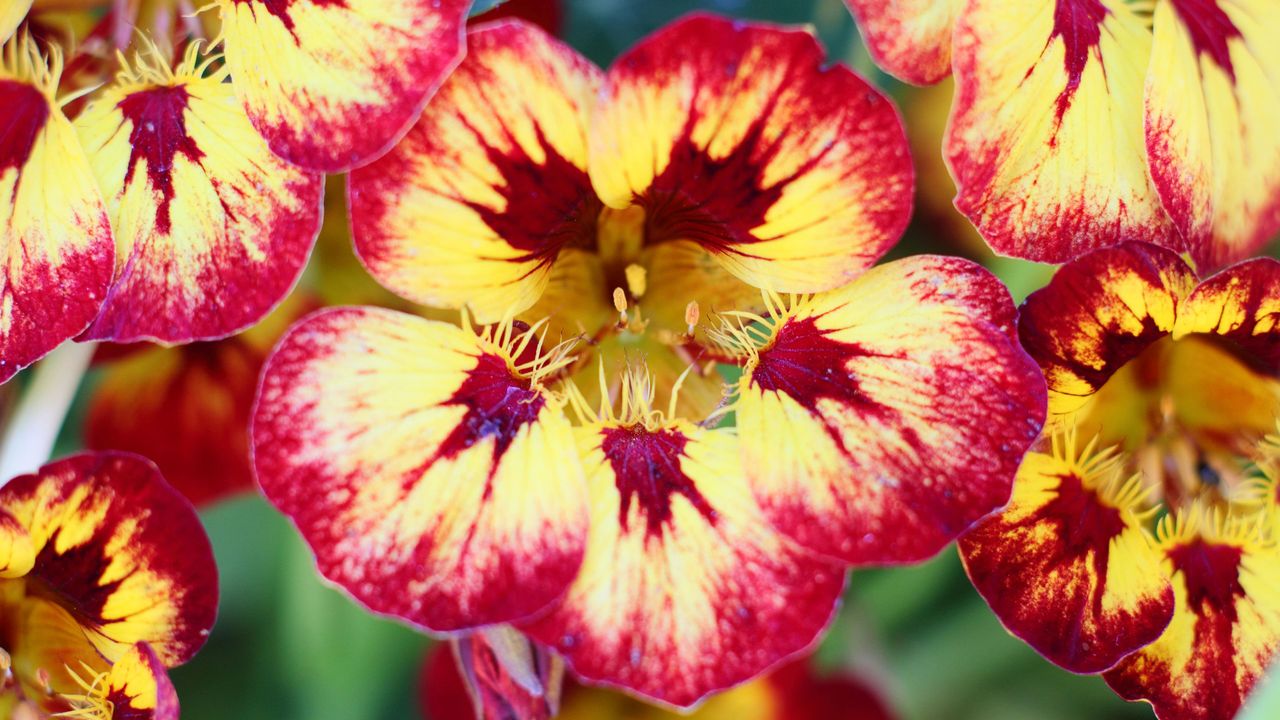

The list of what to plant in June is as wide and varied as you could possibly want it to be. From quick-growing annuals that will bring color to the late summer and autumn to robust perennials that will flower for several months, there's plenty to choose from.
There is, however, one condition. If the summer is dry, be ready to spend time watering as all new plants need a generous amount of moisture to settle them in. Give them a good drench at planting and thereafter a good soaking every few days in the morning or evening, as these are the best times to water.
A generous soaking that saturates deep into the ground is much better for healthy growth than a measly sprinkling that only dampens the top layer of soil.
If only the surface is wet, roots stay at the top rather than questing deeper to make the most of all the available moisture. While this isn’t so important with annuals that will only last until fall, it will stunt the growth of perennials that you want to thrive for several years.
Ready to start planning what to plant when? Our round-up of suggestions for the month ahead has plenty to inspire.
Get busy with our list of what to plant in June
There is no shortage of choice with June plantings, so you're guaranteed to find something that will give your flower bed ideas an instant boost this month.
1. Eryngium
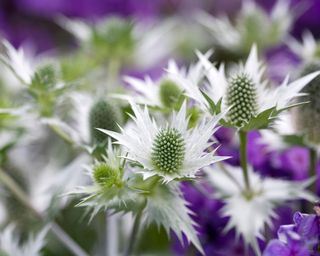
Eryngium giganteum is, as its name suggests, a large and silvery variety of sea holly
Sea hollies or Eryngium are perfect options for what to plant in June because they are hardy characters and don't mind dry soil. In fact, if you are looking for plants as part of your south-facing garden ideas, these should be at the top of your list.
These quirky beauties have spiky leaves that are sometimes variegated and a ‘ruff’ below clusters of little blue flowers in shades of silver and blue. They are perfect for gravel gardens and mixed borders, are one of the best coastal plants and attract lots of pollinators.
Eryngiums are pretty pest and disease free, though they may need a mulch of manure or straw over their roots in colder regions.
Varieties include ‘Big Blue’, which has large strikingly blue flowers and contrasting grey foliage, compact E, varifolium and ‘Neptune’s Gold’, which has blue stems, yellow foliage and blue-and-gold flowers.
Top tip: Eryngiums are one of the best plants for seed heads too, so once they have finished flowering, resist the urge to deadhead as their architectural beauty will bring interest to the garden through winter months.
2. Nasturtiums
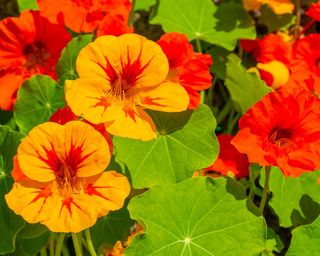
Nasturtiums are easy to grow, colorful and help keep pests off edible plants
When I was little I used to love it when my dad grew nasturtiums because I’d collect the cabbage white butterfly caterpillars that fed on them and raise them in jam jars (much to my mum’s ‘delight’).
These days I love to grow them myself, still for caterpillar-related reasons, because they are great for companion planting and will draw butterflies and other pests away from your brassicas.
Nasturtiums are quick and easy to plant in June, and low maintenance to grow and care for. Their flowers, bright and bold trumpets in shades of red, orange and yellow, flourish right up to the first frosts, when you can add them to the compost heap.
There are trailing varieties that are worth considering as part of your summer container ideas and compact forms that work well in informal beds and around edible crops in your raised garden beds as they lure butterflies away from brassicas and blackflies away from your beans. Their nectar is also a magnet for insects such as hoverflies, ladybirds and lacewings whose larvae eat many garden pests.
It is warm enough now to sow them where you want them to grow, in soil that has been raked and cleared of weeds and debris and watered. They will even thrive in poor soil as long as they get plenty of sun.
Top tip: Nasturtiums are also known as Indian cress and the leaves, flowers and seeds are all edible. Young leaves and the flowers taste peppery and are ideal for salads and the seeds can be pickled in vinegar and used as a substitute for capers.
3. Sunflowers
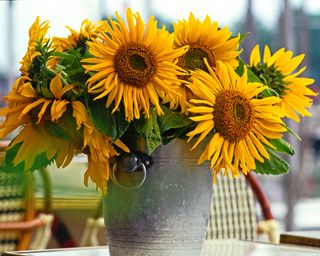
Sunflowers look cheery in the garden and make excellent cut flowers
There is still time to add height, color and good cheer to your borders by sowing sunflowers directly in the soil where you want them to grow.
Just clear a patch of soil of weeds and debris in a sunny, sheltered spot with fertile soil, and sow the seeds thinly before covering with soil and protecting the seeds and emerging plants from pests. I use Vitax pepper dust, available from Amazon and garden centers.
Of course, you don’t have to go for the tall varieties that are the generic view of sunflowers – and also the national flower of Ukraine.
These days there are lots of new varieties available, from pale-petalled ‘Valentine’ and shaggy ‘Astra Gold’ to the deep red ‘Claret’ and dwarf varieties such as ‘Dwarf Yellow Spray’. They all look fabulous in the garden and are widely regarded as one of the best cutting garden flowers.
Top tip: To attract birds into your garden, leave the seed heads in place when petals fall in autumn to provide protein-rich food for many species that will be feeding up before the winter.
4. Water lilies
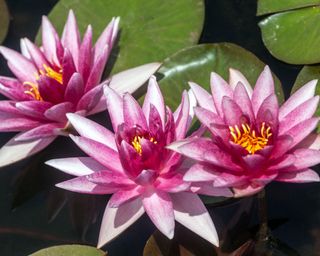
Water lilies come in many sizes to suit all types of ponds
If you have a pond, or have created a little water feature in a half-barrel on your patio, why not add a water lily to the mix this June?
They are one of the best pond plants and come in wide range colors and sizes, so you should be able to find one suitable for you.
Water lilies can be hardy or tender and will flower through the summer, also producing large rafts of leaves that sit on the surface of ponds. More than just attractive, they also provide shade and shelter to reduce water evaporation and give fish somewhere to hide from cats and herons, and their flowers are great for pollinators.
They need a sunny spot and the correct depth of water. Initially stand new plants in their planting basket on a brick so that the new leaves and flowers are at the surface, then gradually lower them through the summer as the plant grows and stems lengthen.
If you don't yet have a pond but are thinking about adding one to your garden, the best times to do so are autumn and spring when the ground is softer. They don't have to be large nor expensive to make an impact – our guide to budget pond ideas is packed with great ways to add a water feature without breaking the bank.
Top tip: Remove dead water lily leaves in autumn and lift and store tender varieties in a light, frost-free place until temperatures rise the following spring.
5. Ammi majus (bishop's flower)
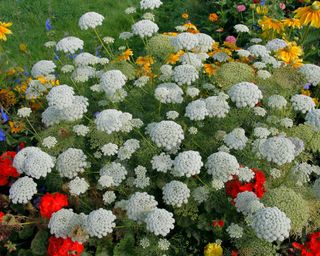
'Queen of Africa' is a variety of Ammi majus that brings coolness to a colourful summer garden
Not all summer flowers have to be shouty ‘look at me’ gaudy types and dainty Ammi majus, or bishop’s flower, is a perfect case in point.
This delicate umbellifer is one of the best white flowers for adding a sense of cool calm to the multicoloured madness of a summer garden. It produces delicate, lace-like white flowers above intricately serrated foliage.
As well as providing a pristine foil for more colorful summer characters, bishop’s flower is also much treasured by flower arrangers and florists.
This pretty annual needs to be planted in fertile soil and likes light shade. Let the seed heads develop and mature and save some seeds for sowing next year, leaving some for goldfinches that will feed on them in the autumn.
Top tip: Do keep in mind that Ammi majus is a poisonous plant for dogs, cats and horses.
6. Canna lilies
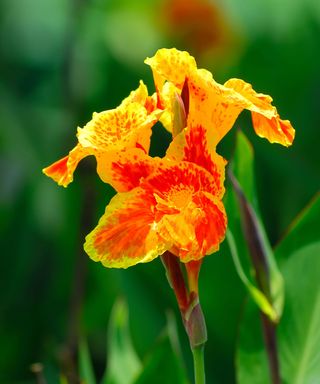
The flowers and colorful foliage of canna lilies add a striking tropical note to garden borders
Canna lilies are an easy and eye-catching way of adding heat and color to your borders.
One of the best tropical plants to give your garden an exotic feel, canna lilies can be grown in garden borders and planters and are renowned as much for their glorious bronze foliage as for their tall spires of flowers in shades of red, orange and yellow.
If you bought canna lily tubers this spring and successfully potted them up they should have grown well and can be hardened off and planted out now.
If you have bought them ready-to-plant, then they are ideal choices for what to plant in June.
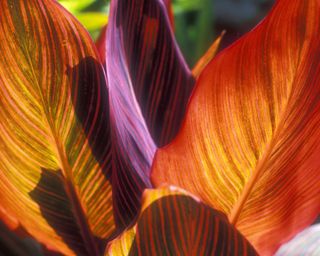
The leaves of canna lilies can be as eye-catching as the flowers
Cannas like rich, moisture-retentive soil and full or partial sun. They sit well in the middle or back of borders and create a stunning scene when planted with airy grasses or delicate plants such as cleome and Verbena bonariensis.
Keep them well-watered during dry spells and deadhead flowers regularly to prolong flowering.
Top tip: Cannas are not reliably winter hardy. In mild areas you can fold over the dying foliage in fall and mulch the crown with straw to keep it insulated. Alternatively lift the rhizomes and overwinter them somewhere cool but frost-free before potting them up again next spring.
7. California poppies
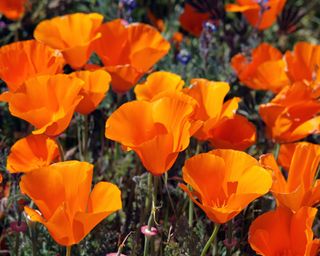
California poppies can be sown now for late summer and early fall color
It is always good to have something to add some late summer color to the garden, which makes California poppies a perfect, easy-to-grow variety to plant in June.
These are cheerful plants with attractive blue-green foliage and skyward-facing funnel-shape flowers in shades of yellow, orange and red.
One of the most popular annual flowers, California poppies (also known as Eschscholzia californica) will flower later this summer if sown now into damp soil that has been cleared of stones and weeds. They don’t need good sun to thrive – these easy-going pops of color are perfectly happy in poor soil as long as they have plenty of sun.
For this reason, I like to sow them at the edge of borders so they are less likely to be overshadowed by taller plants.
Top tip: Once they have finished flowering, leave the long, curved seedpods in place to ripen and the plants will self-seed before you add them to the compost heap.
8. Astrantia major
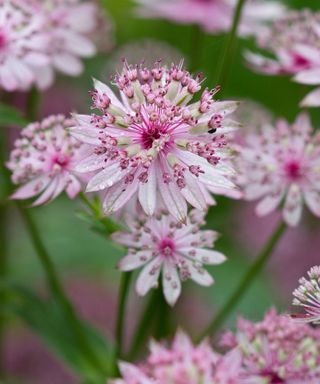
The pink flowers of Astrantia major 'Buckland', which will thrive in shady spots
Many of us have shady areas of the garden and it is often a struggle trying to grow there successfully – not just because soil may be poor, but because shade is where pests like slugs and snails like to hang out.
Step forward Astrantia major, also known as masterwort and Hattie’s pincushion. These pretty cottage garden plants are not only one of the best shade-loving plants, but they are also mollusc-proof, making them ideal for those troublesome areas. Astrantia have palmate leaves and attractively delicate pincushion flowers in shades of pink and white.
They flower all summer long, often well into autumn if you deadhead them after their first flush of blooms, and are valuable for attracting pollinators.
They are relatively low-maintenance but if you have poor, thin soil they will do much better if you incorporate lots of well-rotted compost or manure before planting, and keep them well watered while they get established.
Top tip: Clumps of astrantia can be divided in spring. Lift the plant and divide with a sharp spade blade, making sure each division has healthy roots and topgrowth, then replant each piece at the same depth it was growing previously, and water generously.
9. Winter pansies
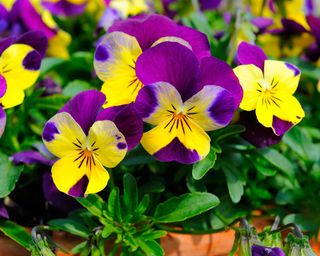
Start pansies now and they will be ready to plant out this fall
We’re all thinking about our summer gardens, but what about winter and spring? When considering what to plant in June, don’t neglect to think ahead and start planning the next swathe of colour you can add to your borders and winter planters.
Sown now, spring bedding such as pansies, violas and bellis daisies will be ready to plant out in autumn. Pansies are hardy and in theory can be sown directly in the soil where you want them to grow.
However, our gardens are packed with summer plants now and you will have better results if you sow the seeds in trays or pots of seed compost and grow them on a cool, light windowsill.
Top tip: When you plant pansies and violas, avoid areas where they grew before as there may be a build up of leaf spot disease spores in the soil. This is a fungal disease that causes greasy blotches and holes in the leaves and is transmitted from diseased plants rather than by airborne spores.
10. Hellebores
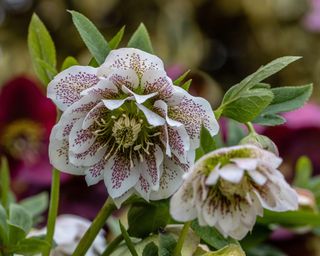
Plant hellebores now for late winter and early spring color
The appearance of delightful hellebores (also known as Lenten and Christmas roses) are one of the first signs that spring is on its way and they are one of the best varieties to plant in June so they can bed in and be ready to flower.
There are several types of hellebores and they all do best in dappled shade and like their soil to be fertile and damp, so dig in lots of well-rotted compost or manure before planting and keep them well watered while they get established.
If you already have hellebores in your garden and you’ve not got around to deadheading this year’s blooms, check around the parent plant carefully. They are promiscuous self-seeders and you often find seedlings popping up at the base of, or close to, the parent plant.
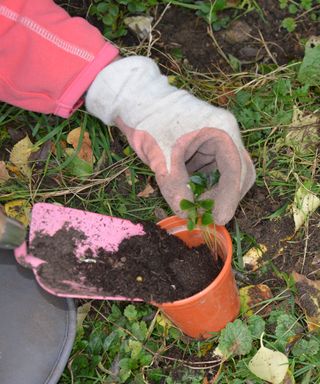
Pot up self-seeded hellebores then return them to the garden when they are large enough
Carefully dig these up, grow them in pots of compost in a cold frame and plant out in fall or when they are large enough to survive in a border.
Alternatively, save some seeds yourself and sow in trays or post of seed compost. Transplant the seedlings into individual pots when they are large enough to handle safely and plant out next spring.
Top tip: After deadheading existing hellebores, remove old and tattered leaves to keep the plant tidy and help prevent attacks from pests and disease.

Ruth is the gardening editor of Amateur Gardening magazine and spends her working days carrying out, writing about and photographing the tasks the readers should be carrying out each week, as well as testing many of the new products that arrive on the gardening market. She is horticulturally trained, with a qualification from the Royal Horticultural Society.
-
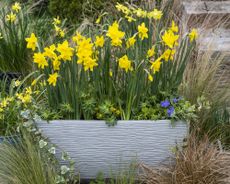 An Update on Gardeningetc
An Update on GardeningetcA word from our publisher
By Beth Murton Published
-
 Do you need to chit potatoes? Find out what the experts say
Do you need to chit potatoes? Find out what the experts sayGrow Your Own Learn how to chit potatoes before planting them in the ground and you’ll be on your way to getting an earlier and bigger harvest
By Drew Swainston Published
